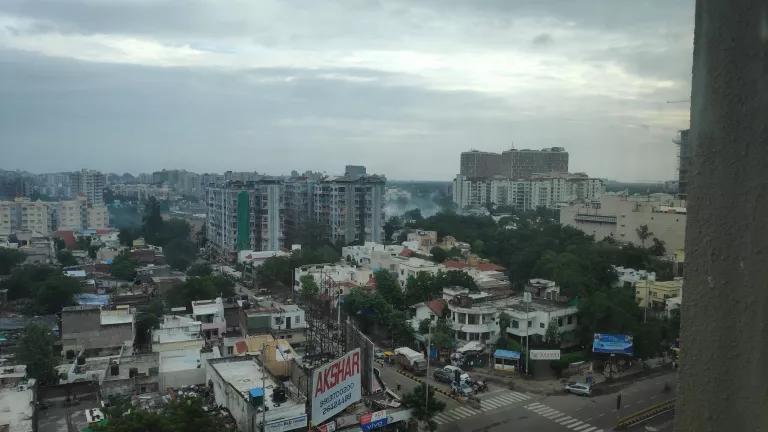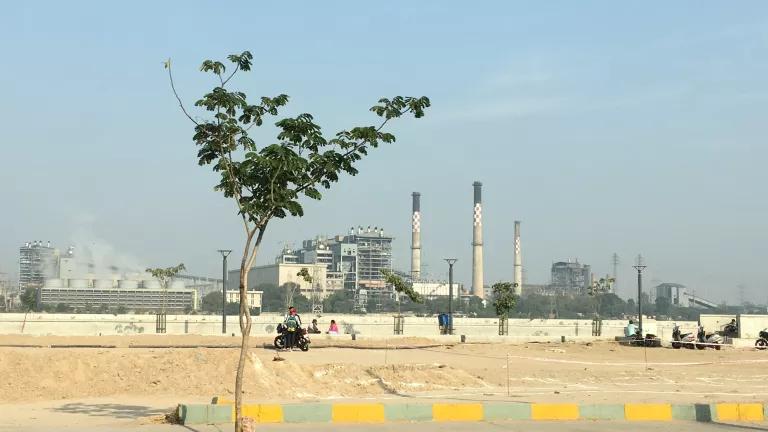Indian Cities Struggle for Clean Air
Aiming to fight air pollution, India’s environment minister Bhupendar Yadav recently announced plans to scale clean air programs to a national mission, “Clean Air for All."

Ahmedabad Air Quality Roundtable Discussion
Co-authored with Jessica Korsh and Polash Mukerjee
With dangerously high air pollution levels and continued respiratory threats from COVID-19, the need to protect public health in India is urgent. Aiming to fight air pollution, India’s environment minister Bhupendar Yadav recently announced plans to scale clean air programs to a national mission, “Clean Air for All”.
Elevating India’s clean air programs to “mission-mode” is significant, as demonstrated in the past by the National Solar Mission and other missions. As part of the mission’s efforts to intensity clean air efforts, NRDC and partners brought international and local experts together for a virtual roundtable, “Priority Actions in the Immediate Term to Improve Air Quality in Ahmedabad.”
To improve long-term air quality, the Indian Government launched the National Clean Air Program (NCAP) in early 2019. The NCAP is active in 132 Indian cities, and city-level Clean Air Plans (CAPs) are being developed and mitigation measures implemented aimed to reduce ambient particulate matter (PM) concentrations. Strong leadership and ambitious actions at the city-level can help deliver transformative and lasting improvements for public health in India’s fight against dangerous air pollution and climate change.
Ahmedabad Spotlight
Ahmedabad, along with New Delhi and Mumbai has topped air pollution levels this year. Toxic metals have been detected recently in Ahmedabad’s air pollution. Ahmedabad has taken steps to combat air pollution. Yet, clearly much more needs to be done to control pollution and protect public health.
Ahmedabad, with partners, NRDC and the Indian Institute of Public Health Gandhinagar, developed and launched the first health risk communication program, called the Ahmedabad Air Information and Response (AIR) Plan. The AIR plan is now incorporated into Ahmedabad’s CAP under the NCAP and has been replicated in other cities, such as Pune. Ahmedabad also has an expert working group on air quality that works with the city to develop and implement clean air strategies, including health risk communication approaches, air quality index dissemination, source apportionment studies, and pollution control measures.
Ahmedabad’s CAP contains several measures targeted at source- specific emission control. Looking ahead to 2022 and getting into “mission-mode”, implementation of the roadmap—including budgetary allocation, responsibility mapping, and periodic evaluation of key performance indicators—is critical. ICLEI South Asia has also recently been selected work with Ahmedabad’s CAP committee to operationalize the city’s Air Quality Management Cell. ICLEI is working to identify and analyze the city’s pollution hot spots and gaps, among other planned interventions with funds from the Finance Commission.
The recent Ahmedabad air quality roundtable highlighted the following four recommended priorities for near term action under the CAP (6 to 24 months):
- Transportation - Identify and retire highly polluting vehicles from operation (pre-Bharat Stage IV (BS-IV) vehicles that have high utilization rates).
- Power plants - Expedite compliance of power plants in the local airshed with the emission standards notified in 2015, including a combination of penalties and incentives that are supported by the NCAP steering, monitoring and implementation committees.
- Industries - Shift from fossil fuels to cleaner fuels, such as natural gas, and renewables, and implement emission control technologies, including micro, small and medium enterprises (MSMEs).
- Air Quality Management (AQM) Governance - operationalize inter-ministerial coordination on AQM through regular operation of the NCAP governance committees and the AQM cell that can digitize inventory, identify gross polluters and introduce mechanisms to work-in accountability at the airshed level as well as identify key performance indicators and improve governance and compliance.
Air quality interventions that will result in large air quality gains in the short term must be prioritized under CAPs. The four recommendations presented above for Ahmedabad are estimated to have a moderate to high level of PM reduction. These recommendations are based on both international practices and those used by leading cities in India, such as New Delhi, Kolkata, and Bangalore.
The future appears promising for air quality work; the Indian government recently conducted a regional NCAP workshop for West India and announced it will revise the PM targets under NCAP, continuing NCAP as the National Mission for Clean Air. The discussion on sectoral emission control strategies as well as governance issues on air quality management at the virtual roundtable serve as a platform to further help the city of Ahmedabad achieve better air quality for all its residents.
Recent Air Quality Reports in India
Amplifying the urgent need for action, the Health Effects Institute’s Global Burden of Disease from Major Air Pollution Sources (GBD MAPS): A Global Approach found that the combustion of fossil fuels (coal, oil, and natural gas) contributed to an estimated one million deaths globally in 2017. Of those deaths, 800,000 were in South Asia or East Asia. The report also estimated that the total fossil fuel change combustion contributes 80.2 µg/ m3 on average to ambient PM2.5 levels across India, which is sufficient by itself to exceed national standards (40 µg/ m3).
Another report, Cost Effectiveness of Interventions For Control of Air Pollution in Delhi by The Energy and Resources Institute (TERI) found that despite the existing emission control policies in the region, air pollution was expected to exceed National Air Quality Standards by 2030. To make Delhi’s air compliant to India’s standards, the effectiveness of sectoral interventions have been estimated at the level of implementation across the Indo-Gangetic Plain. Some of the PM2.5 control strategies identified as highly cost effective are: clean cooking fuel, transition to electric 2-wheel and 3-wheel vehicles, cleaner brick kiln technology, stronger standards for power plants, clean fuel transition in industries as well as fleet modernization of trucks and buses. The study estimates that a full implementation of recommended control strategies can avoid over 14,000 mortalities by 2022 and 12,000 by 2030 in Delhi NCR. These avoided mortalities can result in economic benefits of around ₹45,000 crore (~$5.95 billion) in 2022 to 2030. The economic benefits of moving toward clean air outweigh the costs, as seen elsewhere in the world.
Because air quality problems in India are often driven by pollution from the same fossil fuels that accelerate climate change, actions to reduce harmful emissions can achieve major wins for public health in the near-term and long-term, for the environment, and for India’s economy. City led action, like those in Ahmedabad, is at the heart of achieving these wins.
Jessica Korsh is a climate health expert working with NRDC. Polash Mukerjee is a climate health expert working with NRDC as a consultant based in New Delhi.


